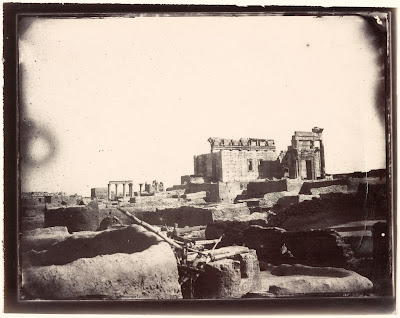 Fat chickens. But some things are not so predictable. For example I recently discovered that today's chickens owe their chubbiness not to Frank Perdue but to the Catholic Church. That's right, until about 1,000 years ago, chickens were not widely domesticated in Europe. Most folks in medieval Europe preferred wild and hardy birds such as pheasants and geese. But back in the 10th century, as a result of monastic reforms, the changing rules for fasting required abstaining from the meat of four-legged animals: cattle, sheep, goats, etc. To us this might not seem a very big deal. After all, today's Catholics are required to fast only two times each year: Ash Wednesday and Good Friday. But in medieval times fasting was mandated about 130 times each year. This reform, therefore, made the two-legged chicken a far more attractive alternative and people began to domesticate (and fatten) these tasty critters. Read more here.
Fat chickens. But some things are not so predictable. For example I recently discovered that today's chickens owe their chubbiness not to Frank Perdue but to the Catholic Church. That's right, until about 1,000 years ago, chickens were not widely domesticated in Europe. Most folks in medieval Europe preferred wild and hardy birds such as pheasants and geese. But back in the 10th century, as a result of monastic reforms, the changing rules for fasting required abstaining from the meat of four-legged animals: cattle, sheep, goats, etc. To us this might not seem a very big deal. After all, today's Catholics are required to fast only two times each year: Ash Wednesday and Good Friday. But in medieval times fasting was mandated about 130 times each year. This reform, therefore, made the two-legged chicken a far more attractive alternative and people began to domesticate (and fatten) these tasty critters. Read more here.Palmyra photos from 1864. Also in yesterday's post I described the destruction by ISIS of so many ancient sites in the Middle East, especially in Syria. One of the cities I mentioned is Palmyra, an important ancient trading center with a history that stretches back 4,000 years. Palmyra's ruins were among the most visited in Syria and one of the highlights had been the ancient temple of the god Ba'al, a pagan god mentioned frequently in the Old Testament.
In 1864 Louis Vignes, a young lieutenant in the French navy, took 29 photographs of Palmyra, surely the first photographs ever taken of the city. Last year the Getty Research Institute acquired the photos and made them available. Since virtually everything in Palmyra was destroyed by the barbarians of the Islamic State, these photographs provide us with a glimpse of what the site looked like 150 years ago. Here's a link to an article which includes many of the photos: Ruins of Palmyra. You can also examine these photos and others taken by Vignes by visiting the Getty website. I've included one of these photos below:
 |
| Temple of Ba'al in Palmyra (1864) |
Interestingly, after its discovery in Israel in 1913, the tablet was used as a paving stone for 30 years. This wore down some of the chiseled inscriptions, blurring many words. It eventually made its way to the U.S. and was owned by the New York's Living Torah Museum, which put it up for auction. The terms of the auction require the unknown buyer to display the tablet in a museum open to the public. Presumably that will happen, so we can all check it out up close and personal.
 |
| Ten Commandments Tablet (c. 500 A.D.) |
Concealed Carry Permit Holders Most Law-Abiding. Here's one that will cause some of my friends' heads to explode. All those people -- and there are now millions of them across the USA -- who have concealed-carry permits turn out to be the most law-abiding of Americans. A recent study by the Crime Prevention Research Center examined two key states, Florida and Texas, comparing crime rates of gun owners, police officers, and other groups, as well as the general population. In its results the study declared that “It is impossible to think of any other group in the U.S. that is anywhere near as law-abiding" as concealed-carry permit holders.
Just to give you an idea of the rates involved, among the general population the overall crime rate was 3,813 per 100,000 people. For police officers the crime rate was 103 crimes per 100,000 officers and the firearms violation rate was 16.5 per 100,000 officers. But among permit holders in Florida and Texas, the firearms violation rate was only 2.4 per 100,000.
Just an FYI, I own several firearms but do not have a concealed carry permit...although that could change.
To read more about the study, click here.

No comments:
Post a Comment